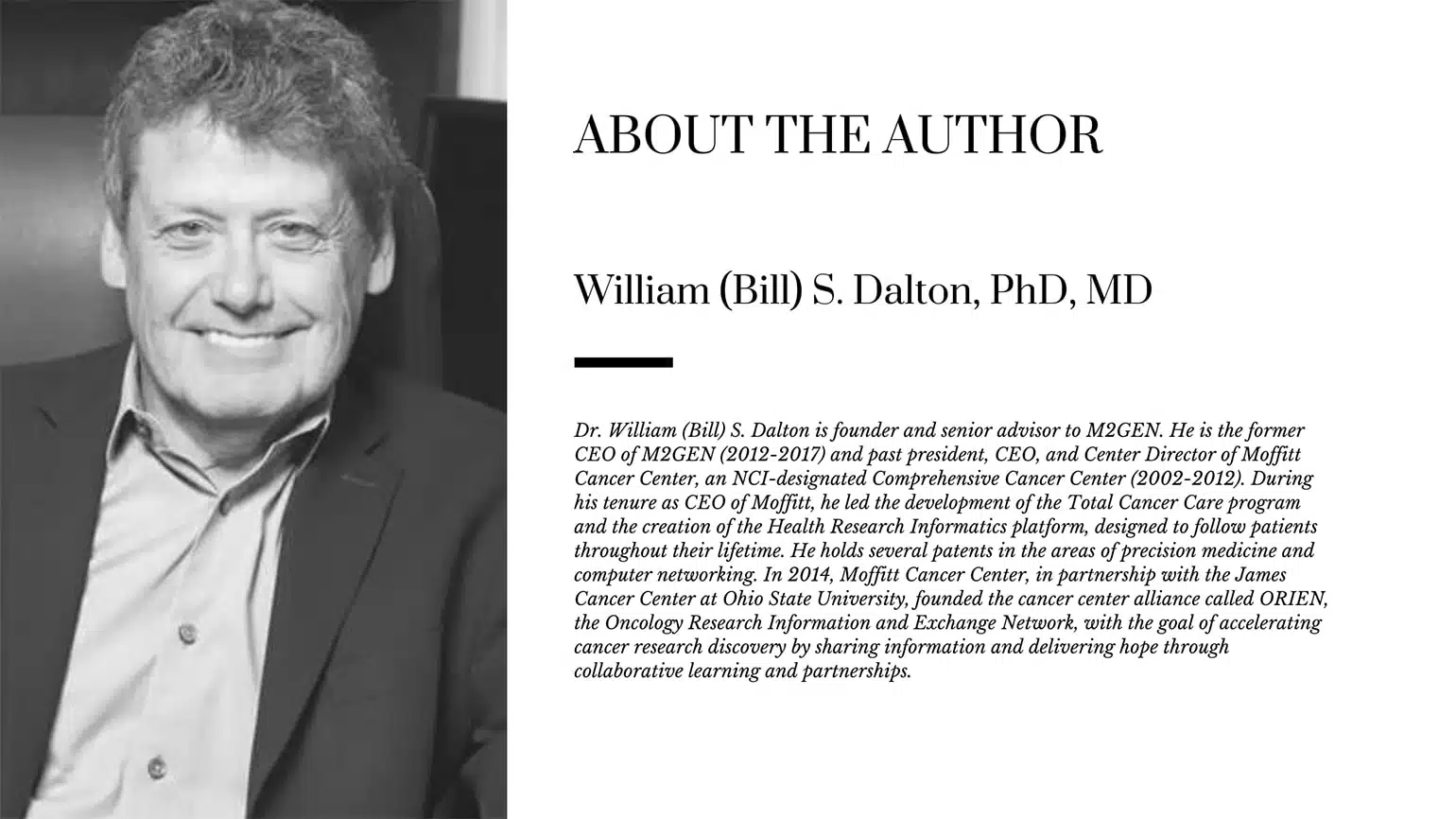How long do new cancer drug therapies take to go to market?
September 23, 2021
By William (Bill) S. Dalton, PhD, MD
Throughout most of human history, cancer was considered to be an incurable disease. Prior to the 1950s, treatment of cancers was limited to surgery and radiation therapy. The beginning of modern chemotherapy occurred in the early 1940’s with the discovery of nitrogen mustard, literally a drug developed from the poisonous gas, nitrogen mustard (Goodman LS et al. JAMA 1946;132(3):126-132). In the ensuing decades, treatments evolved rapidly, with the first case of cured metastatic cancer reported in 1956 using methotrexate (Li MC et al. Soc Exp Biol Med.1956;93(2):361-366). Since that time, researchers have continued to make great strides in understanding how cancer develops and in creating more effective treatments, such as target-based therapy and immunotherapy.
In the 20th century, the approach to drug development became increasingly evidence-based and standardized, and clinical trials were widely adopted to accurately compare the efficacy of new treatments with the standard of care. While these processes have led to many breakthroughs, they are time and resource intensive. On average, it takes 10-15 years for a new drug to make its way from discovery to the marketplace, and the process costs are estimated to be over $2 billion (Tufts Center for the Study of Drug Development).
Understanding the Drug Development Process
Technological advances, including next generation sequencing, has led to the identification of biomarkers and development of novel target-based therapies. While some novel therapies have improved patient outcomes, the prevalence and diversity of biomarkers and targets in patient populations has created a major challenge for the design and performance of clinical trials. The current system of screening patients for trials and enrolling them in biomarker-driven trials is often not adequate to complete the trial in a timely manner and creates unmet expectations for patients seeking trial enrollment. In addition, the present system further increases the cost and time of conducting clinical trials. A new paradigm for clinical trial design and conducting clinical trials must be developed in order to deliver target-based therapies.
There are a variety of procedural and regulatory paths that new treatments might follow; however, the typical development process involves:
Discovery
During the discovery phase, researchers across disciplines collaborate to contribute to a better understanding of specific types of cancer and potential targets, such as cancer biomarkers that predict response to for new therapies. Through an extensive process of development, testing, and validation, researchers slowly uncover promising compounds or treatment approaches.
Clinical Trials
Often, the clinical development phase is the most time- and resource-intensive. Before clinical trials can be organized, researchers must first provide the FDA with an investigational new drug application (IND). Once an IND is approved, drug development moves into multiple phases of clinical trials. Typically, this occurs in three phases, with testing performed on progressively larger groups of patients. Poor clinical trial accrual rates are a leading barrier to clinical research and can impede trial efficiency. Clearly, the advent of target-based therapies shows promise for identifying and selecting patients most likely to benefit from treatment; however, identifying a subset of patients who meet specific, comprehensive eligibility criteria that includes the presence of specific molecular aberrations is a significant challenge.
Ongoing Study
The challenges associated with new drug development don’t end once a therapy hits the market. The FDA often requires post-market surveillance of patients treated with a new therapy to monitor for safety and efficacy (Section 522 of the FD&C Act). In addition to safety monitoring, this real-world evidence is valuable in gaining insights for new treatment and how specific types of cancers develop drug-resistant characteristics.
How M2GEN Is Helping Expedite the Development of New Cancer Therapies
Novel discoveries and therapies are not only helping to advance cancer research, but also improving treatment outcomes and quality of life for cancer patients across the globe. As an oncology-focused bioinformatics company, M2GEN facilitates the Oncology Research Information Exchange Network (ORIEN®) and provides our partners with never-before-seen access to an enormous amount of patient longitudinal clinical and molecular data. Our highly structured bioinformatics tools and services are helping to improve and streamline the processes by which new cancer therapies move from discovery to the marketplace.
For example, with our flagship bioinformatics solution, ORIEN Avatar, researchers can more easily glean new insights, test hypotheses, and quickly identify promising targets, such as biomarkers, for new cancer therapies by using highly specific criteria to create comparator cohorts and in silico clinical trials. Additionally, we leverage the patented Total Cancer Care® protocol to provide researchers with unprecedented access to an extensive registry of patients, which can be used to rapidly identify and contact qualifying patients for clinical trials. M2GEN’s services can be completely customized to our partners’ area of research, providing us with the flexibility to improve the accuracy and speed of every phase of the drug development process.
- Clin Pharmacol Ther. 2018 Mar 23. doi: 10.1002/cpt.1051. PMID: 2957079
- JMIR Res Protoc. 2017 Mar 20;6(3):e45. doi: 10.2196/resprot.7289. PMID: 28320689
As cancer care becomes more personalized and targeted to individual phenotypic and genotypic profiles, M2GEN will continue to pave the way, providing researchers with the tools they need to more quickly and cost-effectively bring life-saving therapies to market. Contact us to learn more about our custom bioinformatics tools and services.
